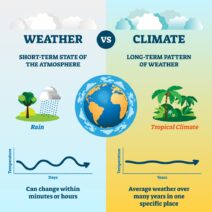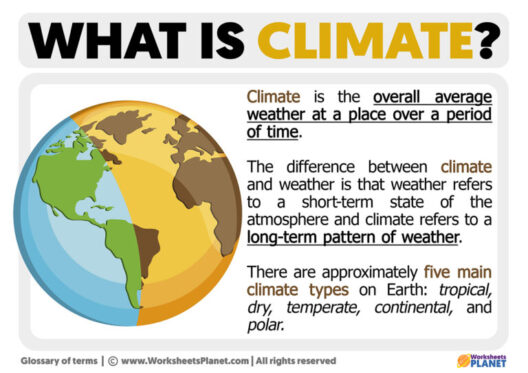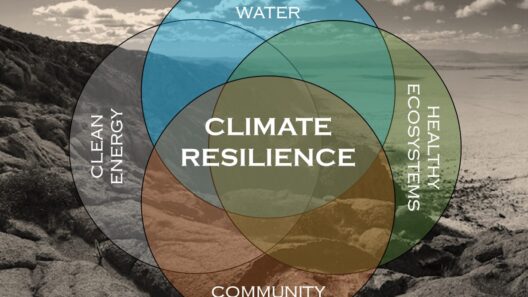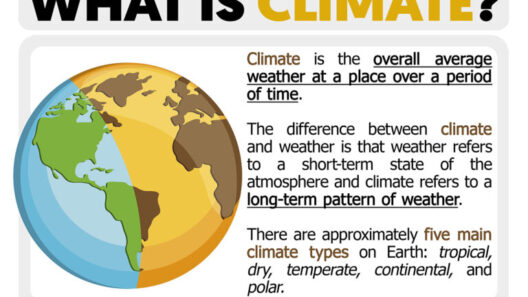The arid expanse of the desert presents a unique and formidable climate that challenges the fortitude of both flora and fauna. When one contemplates the term “desert,” visions of sun-baked terrain, vast sand dunes, and stark landscapes often emerge. However, the climate of desert regions is far more complex than mere heat and dryness. This exploration sheds light on the multifaceted characteristics of desert climates, encompassing temperature patterns, precipitation variability, and the intricate ecosystems adapted to extreme conditions.
Deserts, defined as areas that receive fewer than 250 millimeters (10 inches) of annual precipitation, are predominantly categorized into two varieties: hot deserts and cold deserts. Hot deserts, such as the Sahara or the Mojave, feature soaring daytime temperatures and relatively cooler nights. In stark contrast, cold deserts, exemplified by regions like the Gobi or Great Basin, experience frigid winters alongside arid conditions. This dichotomy illustrates the variability of desert climates, each with distinct seasonal patterns and temperature ranges.
Temperature in deserts can be excruciatingly high. During summer months, daytime temperatures in hot deserts frequently exceed 40 degrees Celsius (104 degrees Fahrenheit), while nighttime temperatures can plummet to a significantly cooler range, sometimes dipping below 10 degrees Celsius (50 degrees Fahrenheit). Such drastic fluctuations are attributable to the lack of moisture, which diminishes heat retention in the atmosphere. This phenomenon engenders a unique thermal regime, where the sun’s rays penetrate the barren soil, heating it rapidly, yet the absence of clouds or humidity allows for substantial heat loss after sunset.
The mean annual temperature in many hot desert regions hovers around 20 to 30 degrees Celsius (68 to 86 degrees Fahrenheit), illustrating a consistently warm environment. The interplay between solar radiation and ground characteristics is crucial in understanding the thermal dynamics of these regions. Sandy soils, common in deserts, possess a low specific heat capacity, rapidly absorbing heat during the day and releasing it quickly at night. Conversely, stony or rocky terrains may exhibit different temperature profiles, further deepening the complexity of the desert climate.
Precipitation plays a pivotal role in shaping desert climates, with its sporadic nature profoundly impacting ecosystems. Rainfall in hot deserts is typically infrequent and unpredictable, adhering to a regime defined by short bursts of intense downpours that saturate the ground momentarily. Conversely, cold deserts may experience more consistent, albeit minimal precipitation, often as snow during winter. The seasonality of rainfall can significantly influence plant and animal life, dictating growth cycles and migration patterns.
Notably, desert ecosystems exhibit remarkable resilience to these harsh conditions. Vegetation such as cacti and succulents have evolved to flourish in arid environments, boasting adaptations that minimize water loss. Stomatal regulation, thickened cuticles, and specialized root systems help these plants survive prolonged droughts and thrive in nutrient-poor soils. These adaptations constitute an exemplary interplay of biology and climate, underscoring the intricate relationship between organisms and their environment.
The fauna, too, demonstrates extraordinary adaptations to desert climates. Many desert animals exhibit nocturnal behavior to evade the searing daytime heat, opting to forage and hunt under the cloak of darkness. Species like the fennec fox and the desert tortoise have developed remarkable physiological traits, enabling them to conserve water and regulate body temperature effectively. This evolutionary ingenuity allows life to persist amidst seemingly inhospitable conditions.
Beyond the biological dimensions lies the socio-economic impact of desert climates. Human populations inhabiting desert regions often adapt their lifestyles to the prevailing environmental conditions. Traditional practices, such as nomadism, enable communities to traverse vast areas in search of water and pasture, reflecting an intrinsic understanding of the desert’s climatic rhythms. In contrast, modern advancements have led to more sedentary lifestyles, marked by the establishment of settlements dependent on technological interventions for water and food supply.
The advent of climate change poses a significant threat to desert climates, exacerbating an already tenuous balance. Increasing temperatures and shifting precipitation patterns are anticipated to amplify the aridity of deserts, resulting in altered ecosystems and jeopardizing the survival of indigenous species. Furthermore, the cascading effects on human populations, including resource scarcity and habitat loss, could lead to socioeconomic instability. Understanding the climatic nuances of deserts is, therefore, crucial in mitigating the effects of climate change and fostering sustainable coexistence with these ecosystems.
In summation, the average climate in the desert is not merely a testament to unrelenting heat but an intricate tapestry woven with remarkable adaptability, resilience, and interdependence. From the blistering days and frigid nights to the limited precipitation that supports life, deserts showcase a fascinating interplay between elements and organisms. As we navigate the complexities of climate change, acknowledging and understanding the unique characteristics of desert climates can inform conservation efforts and enhance our collective stewardship of these vital ecosystems.







